Upottery was opened on 17th February, 1944 and became USAAF Station 462. It has since been made famous by the book and TV series 'Band of Brothers', about the 506th Parachute Infantry Regiment, 101st Airborne Division (Easy Company), who trained and flew from here. It eventually closed during November 1948.
This was my first airfield explore, and somewhat of a long-held dream of mine. Visited in January 2009 with Ricasso - a friend from the Derelict Places website forum that we both belonged to and who kindly offered to drive and accompany me - this was the first of three airfields that we visited during January & February.
Our first sight of it at the entrance was this amazing WW2 Bofors Anti Aircraft Gun.
I'm doing something a bit different to my usual articles; as I have a huge amount of photos I've grouped them into sections with subheadings for each specific building or area to make it easier.
WW2 Watch Office
Our first port of call was the Watch Office, which is an unmistakable sillouette on the hill.
I took a lot of photos of this building, both inside and out. The colours and shapes made from weathering and deterioration was just lovely and fascinated me...not least the funny face made from missing bricks!
Seen close to, the 'funny face' missing bricks were part of an infilled embrasure, similar to the one on the left.
The jutting 'balconies' on the roof and below the upper door once held metal stairways and railings continuing around the right side of the building and down to the ground.
Now once again farmland, as many of the WW2 airfields originally were, the Watch Office has been used for storing cattle feed, some of the interior walls knocked through for the purpose.
There was access to upstairs too, overlooking part of the perimeter runway.
Watching a war film recently it occured to me that the jagged doorways and knocked through parts of the brick walls look like the film's buildings that had been ravaged by mortar fire. As it happened, the Blackdown Hills airfields were never attacked during WW2.
Looking down on the runway, crazed and broken through age and partially grown over with grass.
The Floodlight Trailer and Tractor Shed
Situated nearby the Watch Office. Now used for farm paraphernalia.
Mechanics & Engineers Plinth
Accompanying the trailer and tractor shed.
Night Flying Equipment Store
Four of these concrete blocks were directly in front, used for securing the doors open.
And the rear with much undergrowth over the large window space...
...with a view of the watch tower on the horizon.
Crew, Rest Locker and Drying Rooms
We found these amongst a small copse of trees.
Only the H-Block foundations remain along with the chimney.
Squadron and Flight Offices
My favourite photo of the day, below. I just love the way the chimney's leaning and the colouration of the grey cement with patches where the red bricks show through.
It was so good to see so many fixtures and fittings still remaining, from the light switches and ceiling braces to metal window frames and even some of the stove remains.
The concrete plinths for the stoves are still in situ, and in the one below are some remains of the stove pipe, the roof outlet seen above.
Latrines
This find, below, was amazing; what looks like an original coffee pot, the kind used on the hut stoves. It really put the hairs up on my neck as I could imagine men belonging to the Easy Company huddled around a stove with a pot like that on top.
Banjo Dispersal Runway
The hedge banks, below, have been faced with tarmac sections from parts of the erstwhile runway.
Electrical Plinth
Nissen Hut
This was the only nissen hut that we saw, sitting in the middle of a field. A friend on the forum told us later that we'd missed the technical site, where a lot more buildings could be found, so there may have been more.
Part of the central track of the runway had been dug up to create a ditch, leaving piles of tarmac at the side. An intersecting runway can be seen on the other side.
General Purpose Hut
We later found several piles of wrecked nissen hut remains, which solved some of mystery of what happened to the others.
Some of the parts had been put to use by the farmer as feeding pens or pig sties, seen below.
The horses were lovely. Quite small and rather shy, they trotted up to see us then stood each with one front hoof raised ready for flight, trotting away again when we moved towards them.
Bomb Stores
There was nothing left of the stores apart from a retaining wall, some piles of brick and more pieces of runway tarmac.
Sewerage & Water Plant
Not a lot to be seen and mostly overgrown, but it was interesting to find it nonetheless.
The final photo is a part of the runway. What I find fascinating is that they used just about anything for the hard core, including broken bricks, grit, small pebbles, larger stones and chunks of cement which must have been the top layer. Much of the aggregate came from Kilmington Quarry, which can be seen in my blog here.
And there we have the first part of the three Blackdown Hills WW2 airfields. Next up is RAF Dunkeswell, coming up as soon as possible. :)


























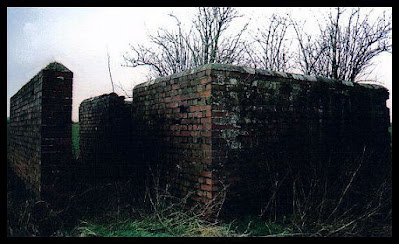

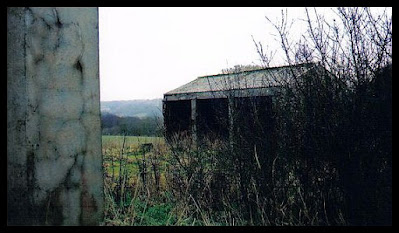










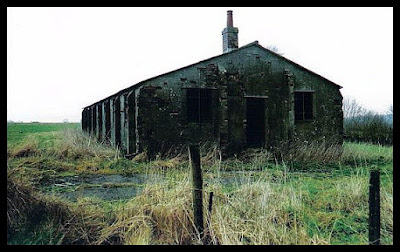


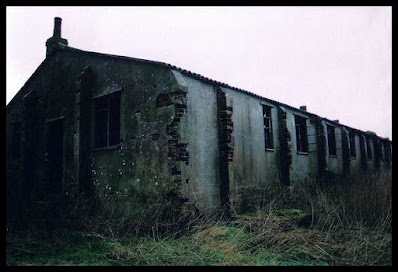


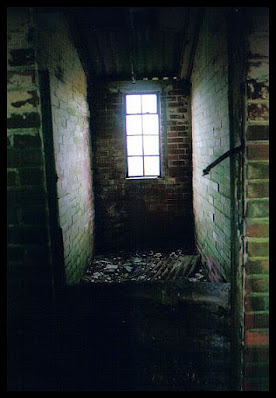




























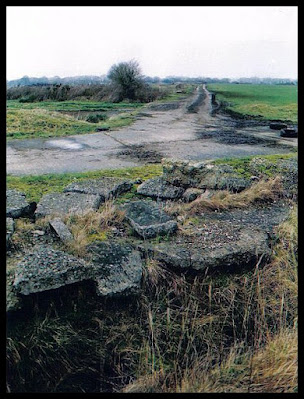









No comments:
Post a Comment